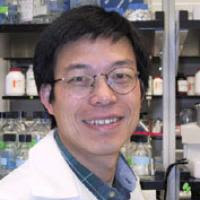Thixotropic three-dimensional gel to revolutionize cell culture Sunday, 28 September 2008 Singapore's Institute of Bioengineering and Nanotechnology (IBN), which celebrates its fifth anniversary this year, has invented a unique user-friendly gel that can liquefy on demand, with the potential to revolutionize three-dimensional (3D) cell culture for medical research. As reported in Nature Nanotechnology, IBN's novel gel media has the unique ability to liquefy when it is subjected to a moderate shear force and rapidly resolidifies into a gel within one minute upon removal of the force. This phenomenon of reverting between a gel and a liquid state is known as thixotropy. IBN's thixotropic gel is synthesized from a nano-composite of silica and polyethylene glycol (PEG) under room temperature, without special storage conditions. This novel material facilitates the safe and convenient culture of cells in 3D since cells can be easily added to the gel matrix without any chemical processes. According to IBN Executive Director Jackie Y. Ying, Ph.D.: "Cell culture is conventionally performed on a flat surface such as glass slides. It is an essential process in biological and medical research, and is widely used to process cells, synthesize biologics and develop treatments for a large variety of diseases.” "Cell culture within a 3D matrix would better mimic the actual conditions in the body as compared to the conventional 2D cell culture on flat surfaces. 3D cell culture also promises the development of better cell assays for drug screening," Dr. Ying added. Another key feature of IBN's gel is the ease with which researchers can transfer the cultured cells from the matrix by pipetting the required amount from the liquefied gel. Unlike conventional cell culture, trypsin is not required to detach the cultured cells from the solid media. As trypsin is an enzyme that is known to damage cells, especially in stem cell cultures, the long-term quality and viability of cells cultured using IBN's thixotropic gel would improve substantially without the exposure to this enzyme. Researchers are also able to control the gel's stiffness, thus facilitating the differentiation of stem cells into specific cell types. "Ways to control stem cell differentiation are important as stem cells can be differentiated into various cell types. Our gel can provide a novel method of studying stem cell differentiation, as well as an effective new means of introducing biological signals to cells to investigate their effect in 3D cultures," said Shona Pek, IBN Research Officer. Andrew Wan, Ph.D., IBN Team Leader and Principal Research Scientist, said: “Another interesting property of the gel is its ability to support the extracellular matrix (ECM) secretions of cells. Gel stiffness is modulated by ECM secretions, and can be used to study ECM production by cells responding to drug treatments or disease conditions.” "The thixotropic gel may then provide new insights for basic research and drug development," Dr. Wan added. About Institute of Bioengineering and Nanotechnology (IBN): IBN, a member of Singapore's Agency for Science, Technology and Research (A*STAR), was established in 2003. Massachusetts Institute of Technology (MIT) Professor Jackie Yi Ru Ying, 42, was hand-picked by then A*STAR Chairman Philip Yeo to lead the institute as its Executive Director. She has been on MIT's Chemical Engineering faculty since 1992, and was promoted to professor in 2001. She is among the youngest to be promoted to this rank at MIT. Under her direction, IBN conducts research at the cutting-edge of bioengineering and nanotechnology. Its programs are geared towards linking multiple disciplines across all fields in engineering, science and medicine to produce research breakthroughs that will improve healthcare and our quality of life. IBN's research activities are focused in the following areas:
- Drug and Gene Delivery, where the controlled release of various therapeutics involve the use of functionalized polymers and hydrogels for targeting diseased cells and organs, or for responding to specific biological stimuli.
- Cell and Tissue Engineering, where biomimicking materials, stem cell technology and bioimaging are combined to develop novel approaches to regenerative medicine and artificial organs.
- Pharmaceuticals Synthesis and Nanobiotechnology, which encompass the efficient catalytic synthesis of chiral pharmaceuticals, and new materials for sustainable technology and alternative energy generation.
- Biosensors and Biodevices, which involve nanotechnology and microfabricated platforms for the detection and treatment of diseases, and the synthesis and screening of biologics.
For more on stem cells and cloning, go to CellNEWS at http://cellnews-blog.blogspot.com/ and http://www.geocities.com/giantfideli/index.html









